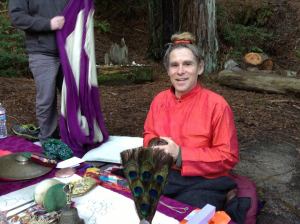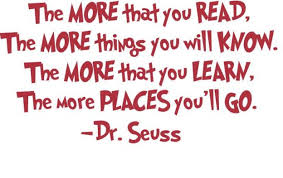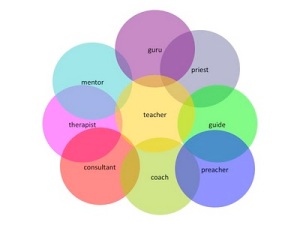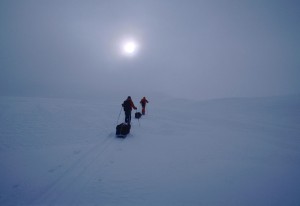#Buddhist #meditation Mini-#Retreat at Home: Report from the Homefront
May 27 – May 30, 2016, all-day, four-day mini-retreat at home: YIPPEE! Did it! First one since my TBI (Traumatic Brain Injury)/concussion/broken nose/hurt eyes in April, 2014; first one in St. Louis. [I called it a “mini” retreat because I usually did at least three weeks’ and up to 11 weeks’ retreat, prior to this.]
I offer this post as a description and explanation for newbies and the curious, but I do not discuss the details of my practice with anyone but my teacher and fellow practitioners.
SCHEDULE:
A typical meditation schedule consists of Tüns (meditation/practice sessions) segmented by meals, breaks, exercise, sleep and personal hygiene time. When we do individual retreats, often we set our own schedules. I modeled this summer’s mini-retreat schedule mostly on the same schedules I followed while on individual retreats at the main meditation center (Rigdzin Ling in northern California), and at my residences in Silver City, New Mexico, and Santa Rosa, Sebastopol and Hayward, California, 1999 – 2014.
Home Mini-Retreat Schedule 2016
3:30 – 4:15 AM— Wake up, ablutions, etc.
4:15 – 5:30 AM— First Tün (meditation/practice session)
5:30 – 6 AM— Breakfast
6 – 10:30 AM— Second Tün (with two ten-minute breaks)
10:30 – 11 AM— Lunch
11 AM – 12 PM— Third Tün
12 – 1 PM— Nap (during first third, usually; see below). Otherwise, Fourth Tün
1 – 3 PM— Exercise (swimming/driving to and from) with moving meditation for 35 minutes while swimming
3 – 5 PM— Fourth/Fifth Tün
5 – 5:30 PM— Dinner
5:30 – 8 PM– Fifth/Sixth Tün (with one ten-minute break)
Total meditation time: about 11-12 hours/day, so about 40 hours (I ended before dinner on May 30).
LOCATION:
When I was fortunate enough to be at RZL, I often sat on a cliff overlooking a pond, river and mountains in the distance, above the main buildings of the center. For other types of practices, meditators prefer or must be indoors or even in a cave or place of complete isolation and darkness for most of the time.
Many people doing the dzogchen Tibetan Vajrayana practice of awareness (rigpa) meditation, trek chöd, as I do, prefer to sit where we have an unbroken view of the sky.

NOT what my home retreat looked like at all, this year
There aren’t many cliffs and sky views near where I now live, in St. Louis, Missouri, USA, and I didn’t want to spend a lot of time driving to a spot at which there would be no food, no bathroom, no easy place for this mostly injured body to sit, and no place to swim. Hence, a home retreat. I could almost see the sky, sometimes. I could see trees, bushes, a street and parking lot. Didn’t matter at all. I wasn’t involved with any of it. We keep our eyes open for this type of meditation, but with a “soft focus,” not paying particular attention to anything while noticing everything.

Where I did most of my sitting practice: on the living room couch, learning against these cushions on the left, looking out the glass doors of the patio/deck to the right.
WHAT WE DO and DO NOT DO:
We also hear, smell, feel everything. We are not “checked out,” if we are practicing successfully. We are fully awake while doing our practice, sitting in oneness—in awareness (rigpa, Tibetan)—as often as we are able. We return to this awareness every time our attention wanders. That is the practice of trek chöd (Tibetan), in the simplest terms.
For this type of meditation practice, in retreat, practitioners usually don’t recite mantras, pray (except at the beginning and end of each retreat or even each Tün, if we want), use our malas (Tibetan prayer beads on a string, predecessor of the Catholic’s rosary), chant, visualize, play ritual instruments, enact stories, light incense, fill/offer water bowls, open our shrines or speak. Our practice is stripped-down to sitting and breathing.
The entire retreat is usually conducted in strict silence, which means that we make no eye contact when we do encounter people and we do no talking, writing, reading, or any other communicating (when necessary, we use “functional speech” only). We put away and turn off all cell phones, computers, communication or writing/reading/viewing devices of all kinds. We don’t write letters or answer the phone unless we are in a longer retreat during which we must communicate with family, friends, colleagues, neighbors occasionally to reassure them we are all right or respond to something urgent.
When we are fortunate (and/or wealthy), we have someone to “serve” our retreat: they shop for, prepare and serve our meals, sometimes even cleaning up for us, leaving us free to meditate for more time each day. That is part of the wonderful service that active meditation centers often provide retreatants. Sometimes, though, during non-busy times, when I was at the center, I still had to cook and clean up after my own meals, but I didn’t have to shop.
For home retreats, I have to do it all myself. I manage that by cooking a great big pot of soup and another big amount of something I can dole out each day for my two main meals and then have something small (a bowl of cereal, e.g.) for dinner.
Eating lightly at night is important for me, anyway. During a sitting and silent retreat like this, unlike the more active ones, our appetites get smaller and smaller as the retreat progresses, so we need less food.
THE RETREAT COMMITMENT:
It is important to make a firm commitment to one’s retreat by scheduling the entire period in advance and sticking to it. It is also important to make a daily schedule and adhere to it. Many also maintain/take a vow of celibacy to maintain during retreat (no sex or sex acts); some do not.
We all abstain from intoxicants (recreational drugs, alcohol) during retreat. If we have taken Layperson’s Buddhist Vows (or Five Main Precepts), as I have, we also never get intoxicated/inebriated. I don’t drink or use drugs, anyway, but for many meditators, retreat boundaries include that they refrain from engaging in the use of these substances during retreat.
Even if we get sick, someone dies, and/or there are other seemingly significant events that occur, we strive not to break our retreat commitments. Unless it is to save our own or someone else’s life or involves getting medical care to restore our health so that we can practice better afterwards.
It is important to let our friends, family and neighbors know, especially if we are doing a home retreat, that we won’t be answering phones or responding to texts or emails, for example, during these times/these days so they don’t worry. That way, we prevent someone from getting “wrong view” about meditation/meditators (e.g., not understanding our commitment, they think we are rude, unkind, insensitive, unless we communicate to explain).
We do not waver from this commitment or break our silence for any reason. These commitments and guidelines are called “retreat boundaries.” At the risk of generating “static” and negativity for our next potential retreat, we do not leave the grounds of a closed retreat (the “cloister”) or end our retreat prematurely. Some teachers give dire warnings about practitioners’ breaking boundaries that will result in creating negative future retreat karma, but I don’t like responding to threats. I maintain commitments because I want to do it.
Making and keeping these commitments strengthen the practitioner’s practice foundation and create/maintain a strong “container” for successful meditation practice. I feel good when I keep my chosen boundaries.
This time (or for any other home retreats), I did not have a completely strict, cloistered retreat: just isn’t possible. I drive to and from the pool, shop on the the first day for food and cook when necessary (more often on longer retreats). I also responded to a few communications from people who didn’t know I was in retreat and/or to reschedule things I had forgotten to reschedule. But, mostly, I did keep the strict retreat boundaries and commitments.
THE RETREAT EXPERIENCE:
Buddhist teachers talk about the entire retreat’s span of time as being divided roughly into three parts: “getting in,” “being in” and “rising out.”
“Getting in” is the first third. During this, we acclimate to being on retreat, letting go (sometimes slowly, sometimes more readily) of our daily concerns, activities, personae, thoughts, obligations and settling in to the schedule.
We always “open” our retreat with setting our intention and reaffirming our motivation and with gratitude, with prayers and thanks to our teachers. Usually, other directions are given to us in advance by our teachers.
Sometimes, we make offerings and/or have a ritual feast and prayers (tsog). Sometimes we continue our daily practices for the first day or so. Sometimes we do some preparatory readings (from teachings, notes, books) to remind us of the practice we are about to engage in and how to approach it.
Frequently, a lot of tiredness manifests early in this first third. If so, it is recommended that we nap a lot, recovering from the stress and strife of our usual lives’ demands. The peace, quiet and low-key nature of retreat bring us to a recognition of how exhausted and depleted we have gotten. Extra sleep is then necessary to restore ourselves and to be able to practice better for the rest of the retreat.
The middle third is “being in.” By then, accustomed to the schedule, needing fewer or no naps, we are ready and eager to practice for each Tün. We know what we are doing, we are glad to be doing it, it’s working as well as it will. Depending upon how long this period is and how quickly we are able to dive in, we can get very deeply immersed or only partially, but this is the main part of our retreat’s practice time. Whatever signs of accomplishment we may get usually begin to show up in this portion.
The last third is “rising out.” Sometimes gradually, sometimes more quickly, our minds and bodies begin to leave the depths and rise to the surface, preparing us for returning to our daily lives. For longer retreats, we spend part of this time still in retreat and the last part of it again in practices of formal gratitude. We “close” on the last day with offerings and/or a ritual feast and prayers (tsog), and dedicate the merit (the blessings and benefits of our practice) to all beings.
For the last day/hours or so, we are actually not still in retreat, exactly, but beginning to engage again in the more “ordinary living” aspects (whatever we haven’t been doing and must return to, such as driving, doing laundry, talking/communicating again).
We often don’t realize how deeply we are “in” until we begin to “rise out.” When we have been in a strict retreat for more than a few days, this gradual “return to duties” is very important for safety and acclimating to ordinary life. Otherwise, we can get into serious trouble or even accidents if we go back too suddenly to our busy, complicated home lives and schedules.
WHAT’S NEXT?
We usually meet with our teachers during or after our retreats (when we are so lucky as to be able to do that), to “offer our retreat experience” to the Lama by telling him/her about our experiences, insights, possible signs of accomplishment and/or knowledge acquired/applied successfully. We also bring questions, problems, concerns and “stuckness” that occurred during our retreat to this same meeting (or whenever we next meet) so that we may request guidance and answers from our teachers.
Usually during these meetings or subsequent ones, we get instructions, guidance for the next period of our practice, assignments/options for reading and/or attending live or video teachings. We might even schedule our next retreat(s).
I didn’t get to meet with my teacher at the end of this retreat, but I did see him for a private interview just last month, so I feel very blessed.
HAVING A MEDITATION TEACHER:
Tibetan Buddhists stress the importance of meditating under the guidance of and with instruction from a qualified meditation teacher. I completely agree with this. It is not sufficient to talk with other meditators, read books, listen to teachings on video or audiotapes or in person and then put ourselves into retreat and get ourselves out and go back to our lives.
Without a teacher who is more experienced and qualified to teach and guide us to listen to our experiences and direct our practice, we are certainly running the risk of there being a lot we will miss, misunderstand, misinterpret or just plain get wrong.
There are many qualified teachers in many parts of the world, now. I have put live links to some of them, above, when listing my teachers or main center. There are listings of some centers in Buddhist magazines, websites and other places online.
If you are not lucky enough to have found a teacher with whom you work well or you don’t live close enough to any teachers or centers who host visiting teachers, keep looking/trying. It is well worth the effort.
Where are the Buddhists Around Here?
There are several centers who host qualified teachers in the St. Louis area and throughout the Midwest, of all Buddhist traditions. Very close to where I now live is a Tibetan Buddhist practice group that includes some people who have met some of my own teachers and who use some of the same practice texts that I do. There are two others groups that are “cousins” to my lineages/practices and some of those people have also met some of my teachers and share some practices with mine. Khentrul Lodrö T’hayé Rinpoche‘s main center, Katag Chöling, is about a six-hour drive from here, in Arkansas. These are listed, below:
—Blue Lotus Dharma Center somewhat eclectic, mixed Tibetan Vajrayana and Chan (Chinese Zen) practices Blue Lotus Dharma Center
—Do Ngak Chöling Tibetan Nyingma Vajrayana Buddhism http://dongakcholing.org/
—Katag Chöling Khentrul Lodrö T’hayé Rinpoche‘s main center, https://katogcholing.com
—Kagyu Droden Kunchab—Saint Louis, Mahayana and Vajrayana Buddhism, http://www.kdkstl.org
MY TEACHERS:
I am beyond-words grateful to my teachers.

My beloved Buddhist teacher, Lama Padma Drimed Norbu (Lama Drimed), about 2012
Whatever I was able to accomplish from this mini-retreat or any other part of my practice was entirely due to the blessings, teachings, support and care from my dear teachers, particularly Lama Drimed and the late H.E. Chagdud Tulku Rinpoche (photos above and below), as well as my mom (in whose home I now live), other Lamas, especially Lama Shenphen Drolma and Khentrul Lodrö T’hayé Rinpoche, and sangha (spiritual community of fellow practitioners scattered now around the world) of meditating sisters and brothers: THANKS to you all!

the late His Eminence Chagdud Tulku Rinpoche, my first empowering lama and my teacher’s teacher, about 2001, and his Yangshi (designated and recognized reincarnation), about 2013
I dedicate the merit (benefits) of my retreat to all beings.
Share this: CounterSocial







































































































You must be logged in to post a comment.